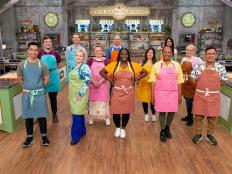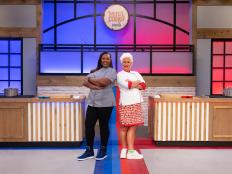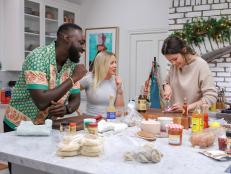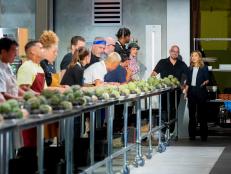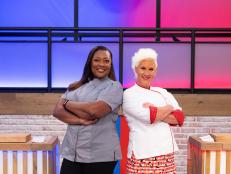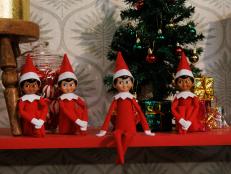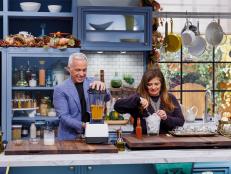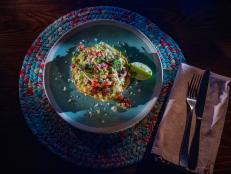3 New Ways to Decorate Easter Eggs
Add some egg-stra flair to your Easter spread.
Decorating Easter eggs is a tradition that family members young and old look forward to each spring. We have three new techniques that are sure to add egg-stra flair to your Easter spread.

Spinning Tie-Dye Eggs
This is a great egg-dying technique for kids of any age, and all you need is a salad spinner! Start by dropping about four drops of food coloring at random around the basket of a salad spinner. Add a hard-boiled egg and, taking two different food color dyes, drop four large alternating drops directly onto the egg in the basket. (You'll need to spin each egg one at a time, to keep them from smashing together.)
Here is where the fun begins—it's time to spin! Close the salad spinner and spin the egg at a moderate speed (so that it doesn't crack). Once the egg is done, roll it around inside the basket to collect any excess coloring that may be left at the bottom. Let these dry on a rack, in an empty egg carton or in egg cups, and enjoy your new works of abstract art!

"Faux-berge" Eggs
This is a great technique for older kids that enjoy crafting or adults that can handle the finer details. These beautiful eggs may look intricate, but they are actually simple to complete.
Start these eggs by hard boiling and dying them a solid color as you normally would. Fill a pastry bag with royal icing (we used a store-bought brand). Pipe a pattern onto the egg using your piping bag. Once the egg is completely decorated, add metallic dragees or white nonpareils to the icing while it is still wet. This may take a little time, but it will add gorgeous dimension and detail. Let them dry at room temperature, or place them in the fridge if you are planning on eating them later.

Dyed Deviled Eggs
For this last technique, we're using natural dyes made from beet, turmeric and cabbage.
You've seen us make them on the show before and can find the recipes on FoodNetwork.com. Once the natural dyes are ready, place them in three separate bowls and set aside.
Begin separating the yolks and whites of hard-boiled eggs as you would to make your favorite deviled eggs. Divide the yolk filling into two bowls. Divide the egg whites among the three bowls of dye and let them sit in the natural solutions for about 30 minutes for the most vibrant results. Remove the whites to a clean paper towel and allow them to dry.
Finally, mix some of the beet dye into one bowl of yolk mixture and some of the turmeric dye into the other. This will not only tint the filling, but give it a pop of flavor and acidity. Add the fillings to piping bags or resealable plastic bags with the corners cut. Pipe different colored fillings into the dyed egg whites. We garnished with some scallions, but parsley or any other green herb would also be lovely!
Enjoy!


































